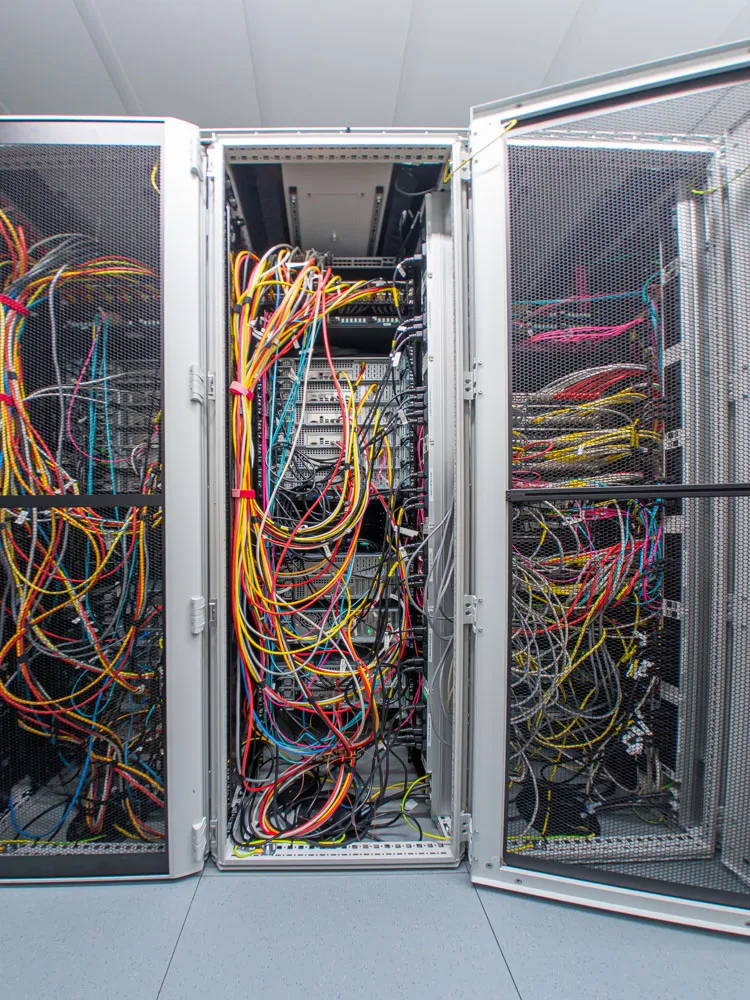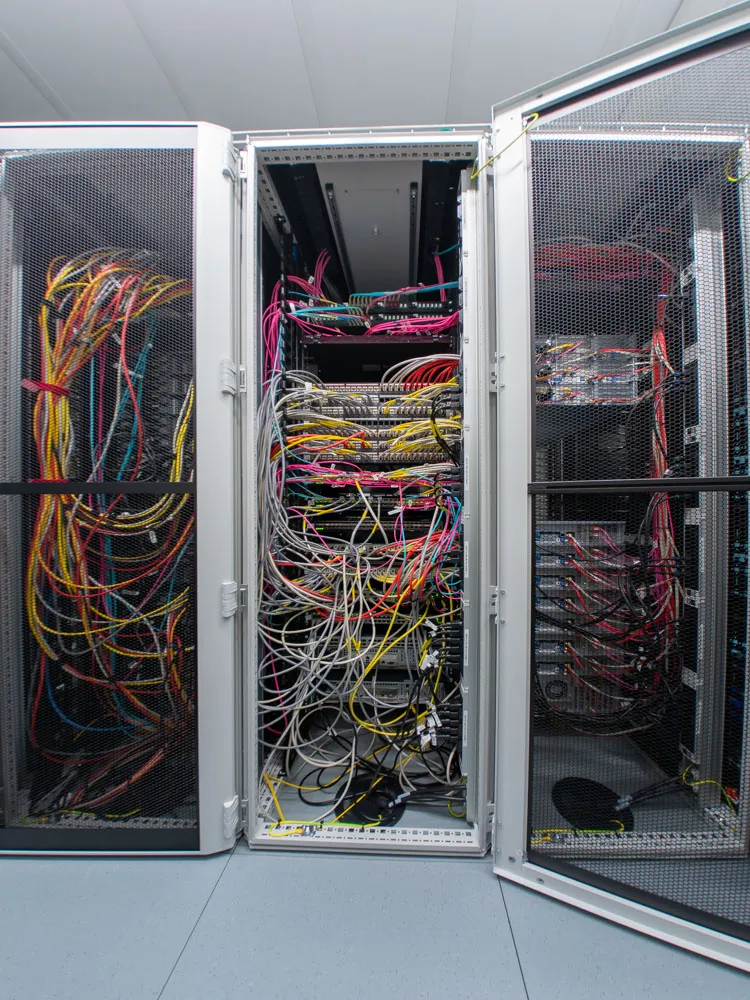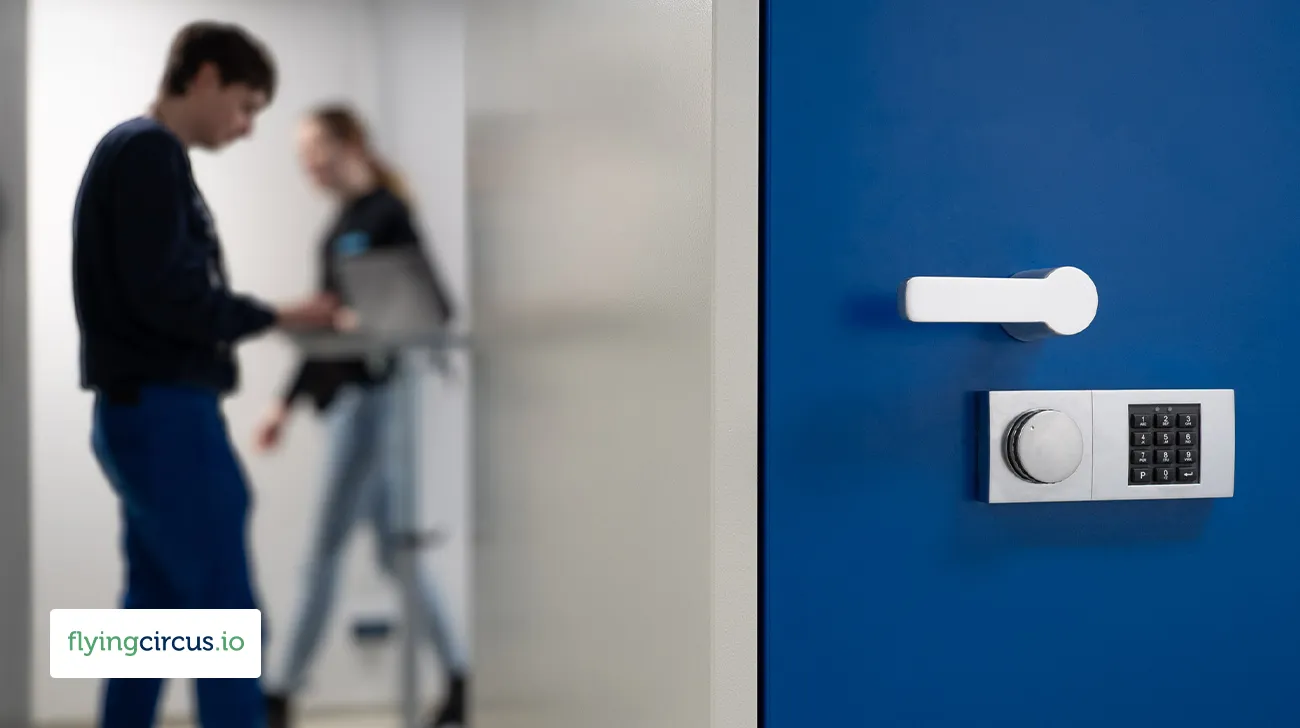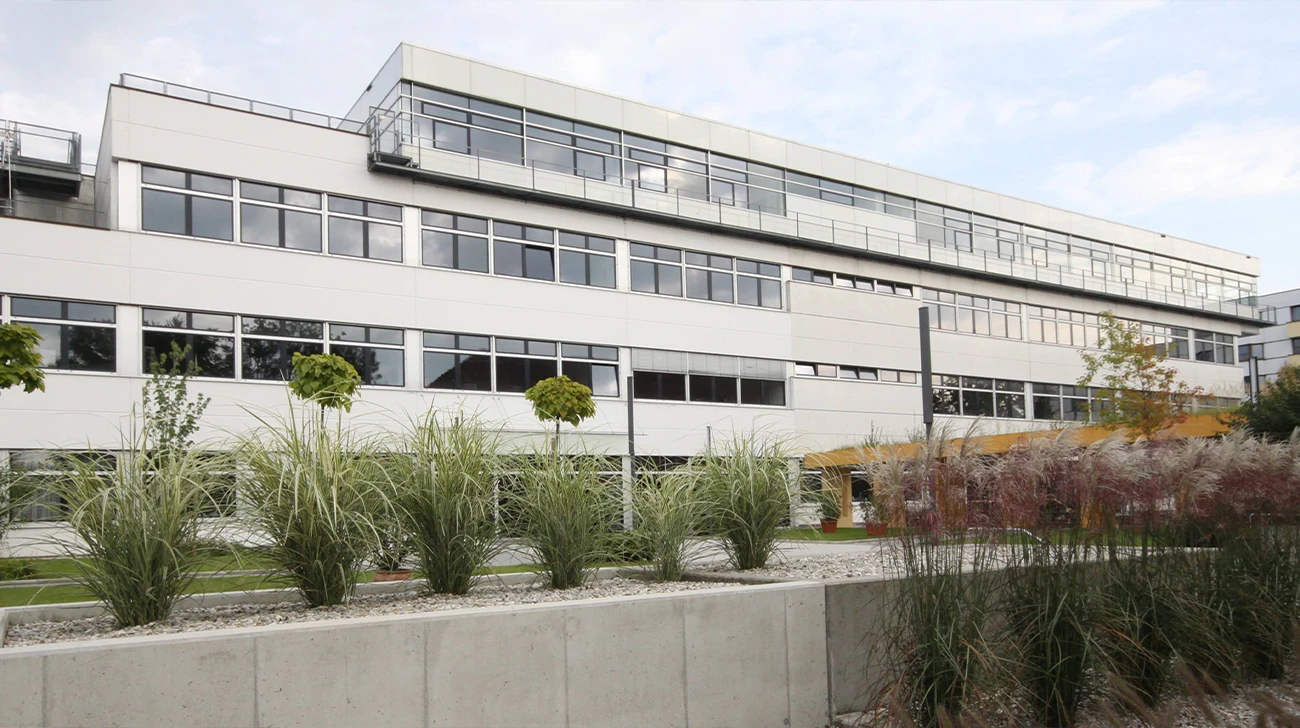The crew at Flying Circus Internet Operations GmbH has been successfully developing individual server environments for customers for many years in order to realize scalable, modern application operation on its own ISO-certified cloud platform.
The Flying Circus combines product and service approaches in a holistic DevOps-as-a-Service service and places particular emphasis on collaboration with the application’s development teams.
Operating its own cloud platform at two locations in Germany presented the Flying Circus with a major challenge in terms of network and network management: managing a large number of copper cables in its infrastructure.
With around 50 servers in 9 server racks and four network cables per server, network management was time-consuming and confusing. In the course of the network redesign, not only hardware and software were considered in the concept, but also active solutions for optimized and flexible cable management were taken into account.
As part of the redesign, not only was the hardware and cabling updated and renewed, but the PATCHBOX was also integrated as a cable management solution.
Facts about Flying Circus
10 Years
on the market
+300
Successful customer projects
2
Locations
“Due to the many copper cables in our infrastructure, we often had difficulties keeping track of the numerous conversion works in our development and laboratory environment, which cost us a lot of time and nerves,” says Christian Theune, founder and CEO of Flying Circus, describing the initial situation.
The existing setup was based on a middle-of-row approach with nine racks, with the switches for productive traffic located in rack 4. These were distributed via copper and fiber optic trunks on patch panels and connected to other switches. There was also a management switch in each rack, which was connected to the servers in the rack via copper cable. With a total of 50 servers, this initially meant 200 network cable connections, which led to a confusing cabling system.
The conventional cabling resulted in a tangle of cables that made work difficult and impaired the airflow. “Removing or tracing the cables in particular was extremely tedious,” recalls Theune.
Network Rack 1: Before/After


As part of the network conversion from a classic Layer 2 to a fully redundant Layer 3 EVPN/BGP/VXLAN setup, Flying Circus switched many connections from copper to fiber optics. This reduced the number of network cables required per server to just three, which reduced the cabling in the cabinet by around 50 connections.
In the search for a more efficient solution, Flying Circus came across PATCHBOX, which was initially used in a test environment at the secondary data center location in Halle an der Saale, the so-called laboratory. In the lab’s most complicated rack, just two PATCHBOXes were used to create order and an overview – a test that convinced the company.
The decision was made to equip six racks in the primary data center with PATCHBOX. “I immediately thought the idea of the cassettes and the ‘pulley’ was clever!” says Theune enthusiastically.
The use of PATCHBOX brought several advantages: The switch to fiber optics and the perfect cable length significantly reduced the physical footprint of the cables, and the number of connections was halved. “We were able to significantly reduce the volume of the cables because they are exactly the length we need,” explains Theune.
Network Rack 2: Before/After


The installation of the PATCHBOX also went smoothly. “The mechanics were simple and self-explanatory,” praises Theune. After just a few attempts, the optimum guide paths were found and the best way to handle the cassettes was clear. Despite initial skepticism, the employees at Flying Circus were ultimately convinced.
The introduction of PATCHBOX has significantly increased efficiency and flexibility at Flying Circus. “A clean cabinet with good airflow takes away the fear of touching anything,” says Theune. “You enjoy your work more because you’re not overwhelmed by the mess.”
The improved management and identification of the cables has significantly reduced the workload for the team. Thanks to the complete redundancy, Flying Circus was able to tackle the functional changeover step by step without disrupting ongoing operations.
“In the second step, we were able to remove the cables individually during operation without affecting the network,” adds Theune. “We also optimized the positions of the PATCHBOX cassettes to route the cables cleanly.”
With PATCHBOX, Flying Circus is relaxed about future network changes. “We know that we can restore order at any time,” emphasizes Theune.
The successful implementation of PATCHBOX at Flying Circus demonstrates how innovative cabling solutions can increase efficiency and flexibility in complex network environments. Thanks to PATCHBOX, Flying Circus can now work faster and more efficiently, benefiting both customers and technicians.








